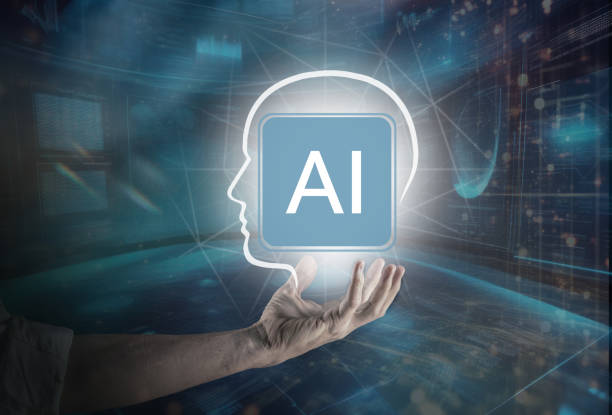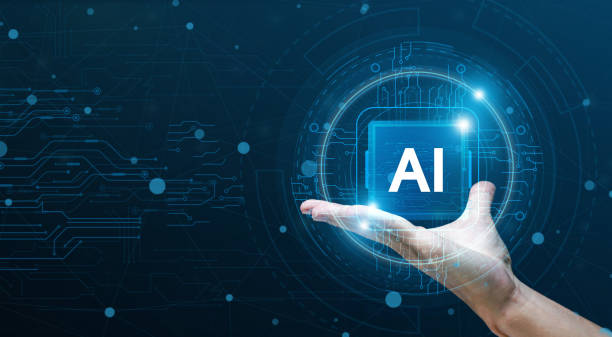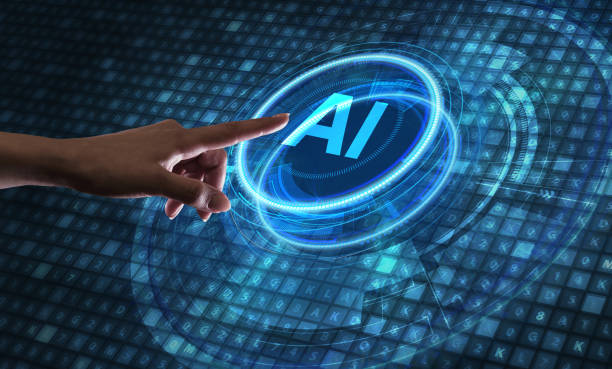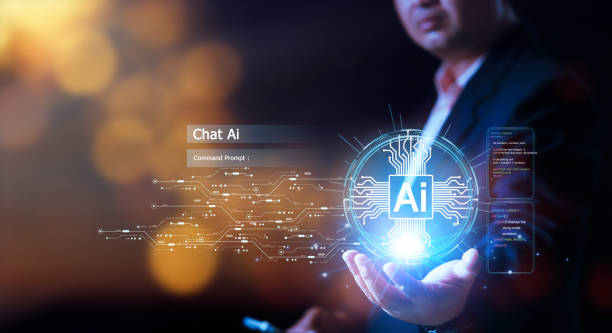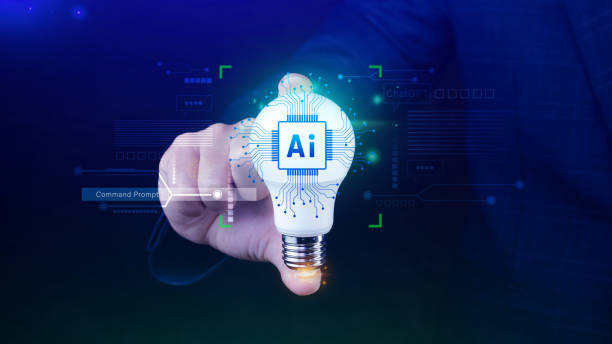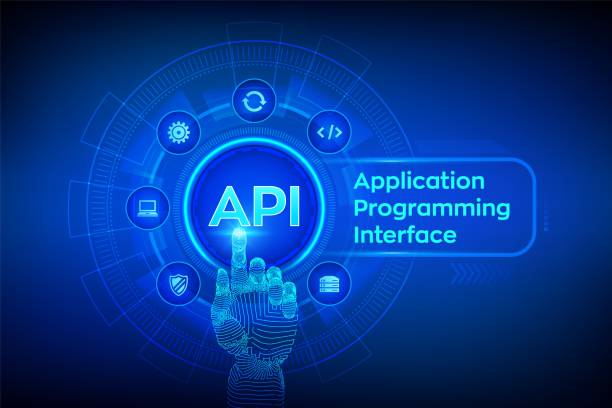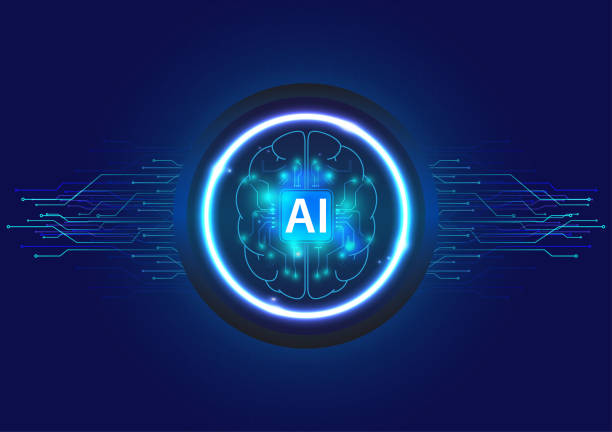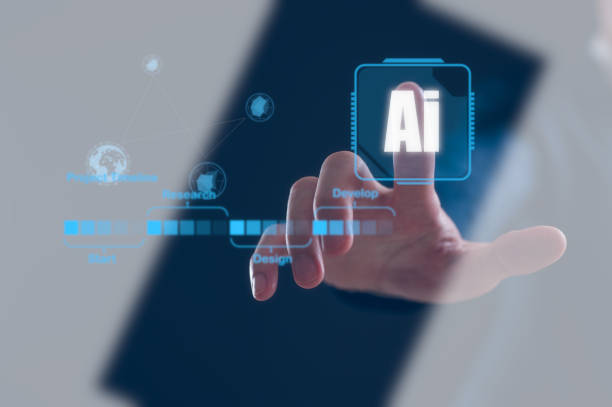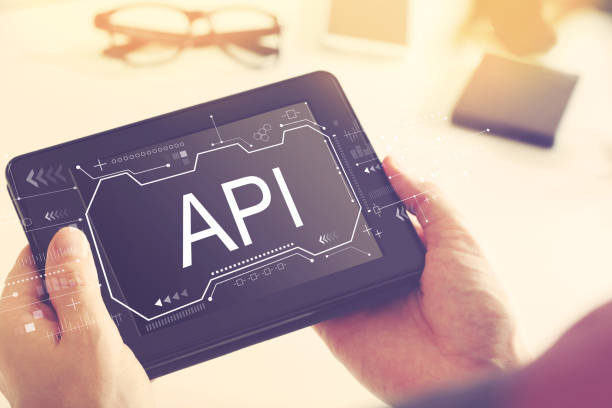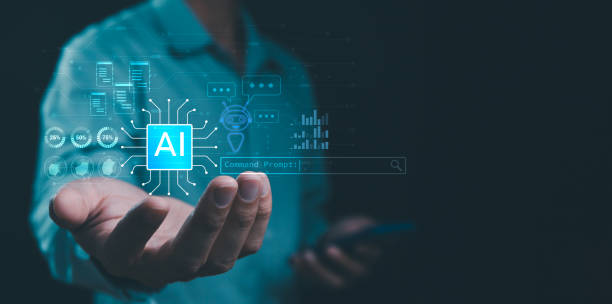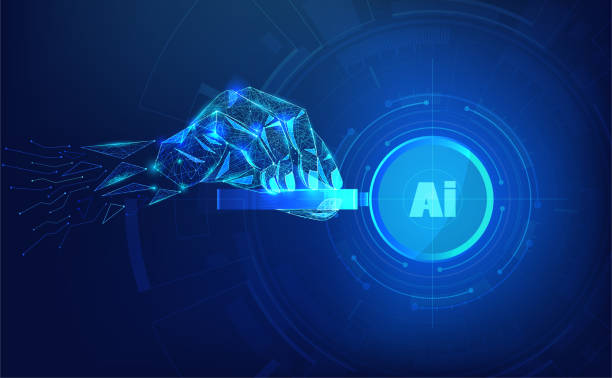What is an Artificial Intelligence Robot and What are its Applications?
In today’s world, #ArtificialIntelligence (AI) is rapidly advancing, and Artificial Intelligence Robots play a crucial role in this transformation.
An AI robot is essentially an intelligent agent capable of understanding its environment, thinking, learning, and performing various tasks independently or with minimal human intervention.
These robots utilize complex AI algorithms and models to make decisions, solve problems, and even demonstrate creativity.
AI robots have applications in various fields such as industry, medicine, education, customer service, and even art.
For example, in industry, AI robots can be used on production lines to perform repetitive and dangerous tasks.
In medicine, these robots can assist doctors in diagnosing diseases and performing precise surgeries.
Furthermore, AI robots play a significant role in automating business processes and improving organizational efficiency.
With the ability to process large volumes of data and provide optimized solutions, these tools help organizations make better decisions and improve their performance.
In essence, an AI robot, as an intelligent partner, assists humans in solving complex problems and improving the quality of life.
Did you know that a weak company website loses you many opportunities daily? Solve this problem forever with professional company website design by Rasaweb!
✅ Create a powerful and reliable image of your brand
✅ Attract targeted new customers and increase sales
⚡ [Get a free website design consultation]
Main Components of an AI Robot
An AI robot consists of several main components, each playing a crucial role in its overall functionality.
These components include: 1.
Sensors Sensors allow the robot to gather information from its surroundings.
This information can include images, sounds, temperature, pressure, and other sensory data.
2.
Processor The processor is responsible for processing the data collected by the sensors.
This processing includes analyzing data, identifying patterns, and making decisions based on the available information.
3.
Artificial Intelligence Algorithms AI algorithms are the heart of an AI robot.
These algorithms allow the robot to learn, reason, and make decisions.
There are different types of AI algorithms, including machine learning, deep learning, and natural language processing.
4.
Actuators Actuators allow the robot to interact with its environment.
These actuators can include motors, arms, wheels, and other devices that enable the robot to move and perform physical tasks.
5.
Energy Source The robot needs an energy source to power all its components.
This energy source can include batteries, solar cells, or other energy sources.
The combination of these components allows the AI robot to perform complex tasks and continuously learn and improve.
By using these components, the AI robot can become a powerful tool in solving problems and improving the quality of life.
Types of AI Robots and Their Applications
AI robots come in various types, each designed for specific applications.
Some of the most common types of AI robots include industrial robots, service robots, medical robots, and military robots.
Industrial robots are used in factory production lines to perform repetitive, heavy, and dangerous tasks.
These robots typically have high accuracy and speed and can work continuously without fatigue.
Service robots are used in various environments such as hospitals, hotels, and restaurants to provide services to customers.
These robots can act as guides, couriers, or even companions for the elderly.
Medical robots are used in precise surgeries, patient rehabilitation, and drug distribution in hospitals.
These robots can operate with high precision and without tremors, assisting doctors in performing complex surgeries.
Military robots are used for mine detection and neutralization, information gathering, and even armed conflicts.
These robots can operate in dangerous conditions instead of humans, preventing human casualties.
Each of these types of AI robots is designed and developed according to the specific needs of each industry and application.
| Robot Type | Application |
|---|---|
| Industrial Robot | Production Lines, Repetitive Tasks |
| Service Robot | Hospitals, Hotels |
| Medical Robot | Surgery, Rehabilitation |
| Military Robot | Mine Detection, Information Gathering |
Advantages and Disadvantages of Using AI Robots
Using AI robots has its own advantages and disadvantages.
The advantages of these robots include increased productivity, reduced costs, improved accuracy, and performing dangerous tasks.
AI robots can work continuously without fatigue, resulting in increased productivity.
Also, using AI robots can reduce labor costs and result in significant long-term savings.
AI robots can perform tasks with high accuracy and minimize human errors.
Furthermore, AI robots can work in dangerous environments such as mines and chemical factories instead of humans, preventing them from getting harmed.
The disadvantages of using AI robots include high initial cost, the need for expertise for maintenance and repair, and concerns about job losses.
AI robots usually have a high purchase and installation cost and require significant initial investment.
Also, maintaining and repairing AI robots requires expertise and can be costly.
One of the main concerns about using AI robots is job loss by humans.
By replacing humans with AI robots in some jobs, a large number of people may become unemployed.
However, many experts believe that AI robots will also create new job opportunities, and humans can be employed in areas that require creativity and human thinking.
Are you dissatisfied with the low conversion rate of visitors to customers on your online store?
Solve this problem forever with professional online store design by Rasaweb!
✅ Increase the conversion rate of visitors to customers
✅ Create an excellent user experience and gain customer trust
⚡ Get a free consultation
Challenges in the Development of AI Robots
The development of AI robots faces numerous challenges.
One of the most important challenges is collecting and processing large volumes of data.
AI robots need a lot of data to learn and improve their performance.
Collecting, storing, and processing this volume of data can be challenging and costly.
Another challenge is developing AI algorithms that can effectively solve complex problems.
Current AI algorithms still have limitations in some areas and need improvement.
Also, AI robots must be able to adapt to unknown and unpredictable environments.
This requires developing algorithms that can learn and make decisions automatically.
Another important challenge is the ethical issues related to the use of AI robots.
AI robots must be designed to prevent harm to humans and protect their privacy.
Also, it must be ensured that AI robots are unbiased in their decision-making and do not discriminate.
Despite these challenges, researchers and engineers around the world are working to develop AI robots, and significant progress has been made in this area.
Click here to preview your posts with PRO themes ››
The Future of AI Robots and Their Impact on Our Lives
The future of AI robots is very bright and promising.
It is predicted that in the near future, AI robots will be present in all aspects of our lives and will play an important role in improving our quality of life.
In the future, AI robots can help us in homes, workplaces, hospitals, schools, and other environments.
AI robots can perform repetitive and tedious tasks, help us in learning and education, and even act as a friend and companion for us.
In industry, AI robots can automate production lines, improve product quality, and reduce costs.
In medicine, AI robots can assist in diagnosing diseases, performing precise surgeries, and providing healthcare to patients.
AI robots can even play a role in solving complex global issues such as climate change, poverty, and infectious diseases.
However, it should be noted that the development of AI robots must be in a way that prevents harm to humans and protects their privacy.
Also, it must be ensured that AI robots serve the interests of all members of society and do not discriminate.
How to Build an AI Robot?
Building an AI robot can be an exciting and challenging project.
To get started, you need knowledge and skills in various fields such as programming, electronics, and robotics.
The first step is to determine the purpose and application of the AI robot.
You need to decide what tasks your robot should perform and in what environment it should operate.
Then, you need to choose the hardware components of your robot.
These components include sensors, processor, actuators, and energy source.
Sensors allow the robot to gather information from its surroundings, the processor is responsible for processing the gathered data, actuators allow the robot to interact with its environment, and the energy source powers the robot.
After choosing the hardware components, you need to develop the software of your robot.
This software includes AI algorithms that allow the robot to learn, reason, and make decisions.
You can use various programming languages such as Python, Java, and C++ to develop the software of your robot.
Finally, you need to test your robot and evaluate its performance.
If your robot does not work properly, you need to adjust its software and hardware to improve its performance.
Building an AI robot is an iterative process, and you need to continuously improve your robot to achieve the best results.
| Step | Description |
|---|---|
| Define Goal | Determine the robot’s tasks and operating environment |
| Select Hardware | Choose sensors, processor, actuators, and energy source |
| Develop Software | Develop AI algorithms |
| Test and Evaluate | Test the robot and improve its performance |
Click here to preview your posts with PRO themes ››
Learning Resources for AI Robots
If you are interested in learning about AI robots, there are many resources to get started.
You can use books, online courses, websites, and online communities to learn about this field.
Some of the famous books in the field of AI robots include “Artificial Intelligence A Modern Approach” by Stuart Russell and Peter Norvig and “Hands-On Robotics with Python” by Amir Boloori.
Many online courses are offered on various platforms such as Coursera, edX, and Udacity in the field of AI robots.
These courses are usually taught by professors from top universities around the world and can help you learn the concepts and techniques of AI robots.
There are also many websites in the field of AI robots that you can use to learn and update your information.
Some of these websites include Robotics Business Review and The Robot Report.
Online communities are also a good place to connect with other AI robot enthusiasts and exchange information and experiences.
Some of these communities include Reddit and Stack Overflow.
By using these resources, you can gain the knowledge and skills needed to enter the field of AI robots and succeed in this field.
Are you dissatisfied with the low sales of your online store?
Rasaweb is your solution for having a professional and high-selling online store.
✅ Significant increase in sales and income
✅ Easy and enjoyable shopping experience for customers
⚡ Get a free consultation from Rasaweb now!
Ethical Issues in AI Robots
The development of AI robots is associated with numerous ethical issues.
One of the most important ethical issues is the accountability of AI robots.
If an AI robot makes a mistake, who will be responsible? Is the robot’s manufacturer responsible, or its user? This issue has not yet been fully resolved and needs more discussion and investigation.
Another ethical issue is bias in AI algorithms.
If AI algorithms are designed in a way that they are biased, this can lead to inequality and injustice in society.
Therefore, it must be ensured that AI algorithms are neutral and do not discriminate.
Another ethical issue is the privacy of individuals.
AI robots can collect a lot of information about people.
It must be ensured that this information is properly protected and not misused.
Another ethical issue is the impact of AI robots on employment.
By replacing humans with AI robots in some jobs, a large number of people may become unemployed.
Solutions must be found to solve this problem, such as retraining unemployed people and creating new job opportunities.
Career Prospects in the Field of AI Robots
The field of AI robots is one of the fastest-growing fields in the world today, and there are many job opportunities in this field.
Some of the common jobs in the field of AI robots include robotics engineer, data scientist, AI software engineer, and automation specialist.
Robotics engineers are responsible for designing, building, and testing robots.
They must have knowledge and skills in various fields such as mechanics, electronics, and programming.
Data scientists are responsible for collecting, processing, and analyzing data.
They use AI algorithms to extract useful information from data.
AI software engineers are responsible for developing and implementing AI algorithms.
They must have knowledge and skills in various fields such as programming, machine learning, and natural language processing.
Automation specialists are responsible for automating processes and systems.
They use robots and other automation technologies to increase productivity and reduce costs.
Given the rapid growth of the field of AI robots, it is predicted that job opportunities in this field will increase in the coming years.
If you are interested in working in this field, you need to gain the necessary knowledge and skills and prepare yourself to enter this job market.
Click here to preview your posts with PRO themes ››
FAQ
| Question | Answer |
|---|---|
| What is an AI Robot? | An AI Robot is a machine capable of understanding its environment, reasoning, learning, and making decisions to perform tasks independently. |
| What is the difference between regular robots and AI robots? | Regular robots perform repetitive tasks based on pre-programming, while AI robots can learn from experience, interact dynamically with the environment, and even behave in a way that resembles human intelligence. |
| What are the main applications of AI robots? | They are used in industries (manufacturing, assembly), medicine (surgery, diagnosis), services (customer support, domestic), exploration (space, underwater), and many other fields. |
| What technologies are used in building AI robots? | Machine Learning, Computer Vision, Natural Language Processing, Deep Learning, and Robotics are among the key technologies. |
| Can AI robots have emotions? | Currently, robots do not have emotions in the human sense. They can identify and respond to emotions, but they do not experience emotions themselves. |
| What are the main challenges in developing AI robots? | Safety, reliability, ethics, autonomy, adaptability to complex environments, and natural interaction with humans are important challenges. |
| How are AI robots trained? | They are usually trained using a large amount of data, machine learning algorithms, and deep learning to identify patterns and make decisions. |
| Examples of AI robots in everyday life? | Smart robotic vacuum cleaners, customer support chat robots, self-driving cars, and surgical robots in hospitals. |
| Are AI robots a threat to human jobs? | Some repetitive jobs may be automated, but at the same time, robots can increase productivity and create new jobs in the development, maintenance, and monitoring of these systems. |
| How is the future of AI robots predicted? | They are expected to become smarter, more autonomous, and capable of performing more complex tasks, and to interact more closely with humans in different environments. |
and other services of Rasa Web advertising agency in the field of advertising
Intelligent Direct Marketing: Designed for businesses looking for digital branding through a SEO-driven content strategy.
Intelligent Social Media: An effective tool for online growth with precise audience targeting.
Intelligent Direct Marketing: A fast and efficient solution to increase click-through rates by focusing on precise audience targeting.
Intelligent Marketplace: Transform customer behavior analysis with the help of marketing automation.
Intelligent Social Media: An effective tool to increase sales by using real data.
and more than hundreds of other services in the field of internet advertising, advertising consulting and organizational solutions
Internet Advertising | Advertising Strategy | Advertorial
Sources
What is an Artificial Intelligence Robot?
,What is a Chat Robot?
,What are the Applications of Intelligent Robots?
,What is Artificial Intelligence?
? For the rise of your business in the digital world, Rasa Web Digital Marketing Agency is your smart companion. With us, you will have a complete experience of professional services such as modern user interface website design to comprehensive SEO and content marketing strategies.
📍 Tehran, Mirdamad Street, next to the Central Bank, South Kazerun Alley, Ramin Alley No. 6

